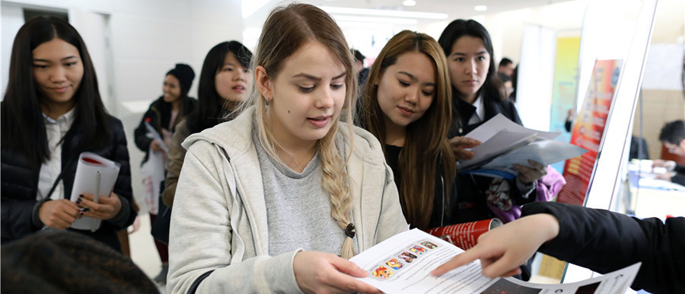China, Australia show how free trade works for mutual gains
BEIJING — In the new global realities that seem to be tilting towards protectionism and anti-globalization, China and Australia offer a perfect example of how free trade does not lead to tit-for-tat combat, but generates handsome gains for both.
Chinese Premier Li Keqiang is currently visiting Australia, where he is seeking closer economic ties with Australia. The visit is expected to consolidate these gains and lift the reciprocal ties to a new height.
China has been Australia's largest trading partner for the past 8 years. It is a loyal buyer of Australian goods, from iron ore to red wine. China exports clothing, telecom equipment and parts to Australia.
The trade structure has put China in a negative balance for years.
Last year, trade between the two countries reached $107.8 billion, with China seeing a deficit of more than $30 billion.
In the thinking of some economists and politicians who claim trade deficits cost jobs and hurt local industries, the persistent trade deficit with Australia should have easily unnerved Chinese policymakers and prompted action to restrict free trade.
But instead of resorting to convenient moves such as building walls and barriers, China has been a staunch champion of free trade, as it knows all too well that the benefits outweigh the costs for countries at either end of the balance sheet.
The key to address trade imbalance lies not in closing the doors, but otherwise.
In the case of China and Australia, strong China commodity demand supported the latter's export growth, and helped Australia withstand the shocks of the global financial crisis.
Although China has run a trade deficit so far, its economy has benefited from Australia's ample supply of commodities and Chinese consumers are getting a good deal from Australia's consumer goods.
A third round of tariff cuts under the bilateral free trade agreement was put in place in January 2017, and Premier Li's visit will continue to push two-way openness in services, innovation and investment.
According to research by the Australia China Business Council, under a conservative growth scenario for China, one million new Australian jobs could be created in service sector by 2026, thanks to closer economic ties with China.
With Australia seeking to develop its northern region while China promotes its Belt and Road Initiative, the two countries could capitalize on each other's experience and expertise in infrastructure construction and financial services.
Such deeper engagement shows that free trade is not a zero-sum game, but could make China and Australia better off.
While the global economic quagmire persists, it is easy for countries to scapegoat globalization for their own economic woes and resort to protectionism, although their prosperity has been built on the free flow of trade and investment in past decades.
History has proved that a trade war will not make trade fairer, while protectionism offers no genuine protection.
As Chinese President Xi Jinping has put it, any attempt to cut off the flow of capital, technologies, products, industries and people between economies, and channel the waters in the ocean back into isolated lakes and creeks is simply not possible.
The question should not be whether to promote globalization or not, but how to make it more inclusive and ensure its benefits are shared.
Over the next five years, China will import goods worth around $8 trillion. Inbound and outbound investment is expected to hit $600 billion and $750 billion.
Countries should join China and Australia to keep an open mind and keep their doors open.









